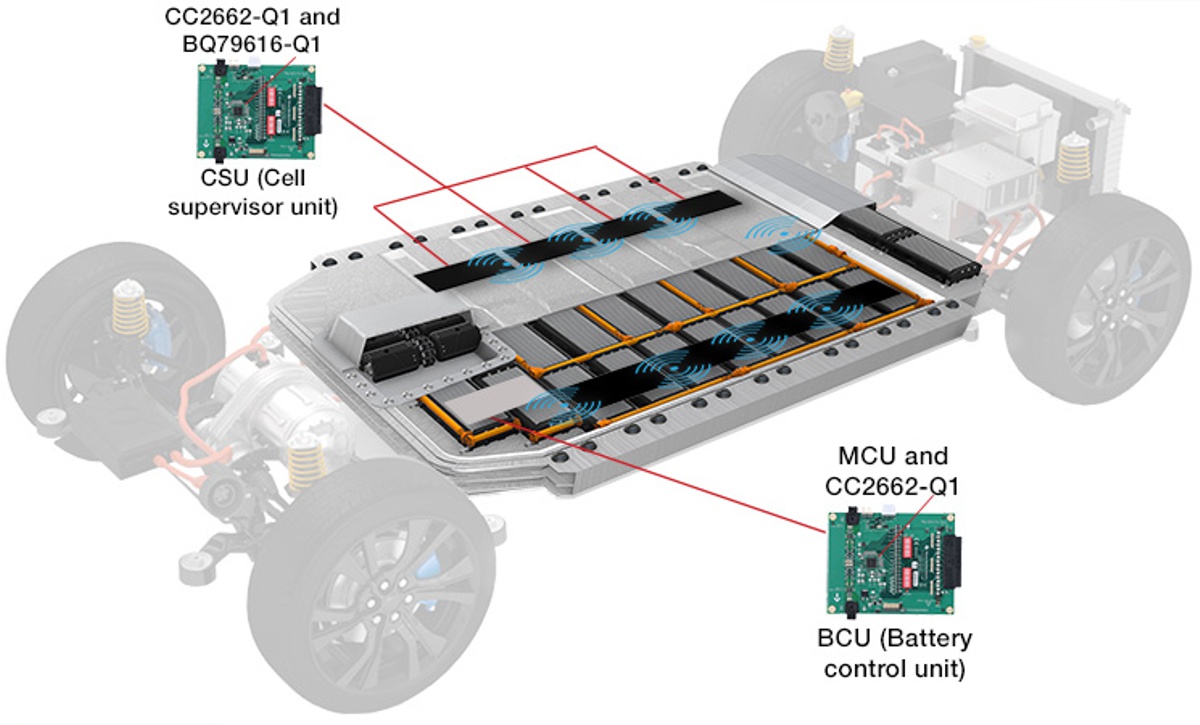SLYY218 December 2022 BQ79731-Q1
- At a glance
- Authors
- 3
- The working principle of a BMS and industry trends
- New battery chemistries
- Wireless BMS
- Advanced estimations of battery capacity and battery health
- A detailed look at the cell supervisor unit (CSU)
- Traditional vs. intelligent battery junction box (BJB)
- A detailed look at the BJB
- A detailed look at the battery control unit (BCU)
- Creating a complete battery test environment ecosystem
- Conclusion
- Additional resource
Wireless BMS
Wires are the de facto method of implementing a BMS today. In many cases, it is the most reliable way to achieve Automotive Safety Integrity Level D (ASIL D) compliance because functional safety capabilities are built into the daisy-chained wired communication protocol. Wires have their disadvantages, however: cable failures, warranty repairs and battery cell replacements are expensive.
One advantage of a wireless BMS, shown in Figure 2, is the simplicity associated with assembly and production of the battery pack – which can save costs and increase efficiency during production. Production line technicians can simply assemble the battery pack and get instant readings, whereas a wired BMS requires technicians to plug cables into every battery module.
Another advantage of a wireless BMS is that cable harnesses and connectors can be one of the leading causes of failure in a battery pack. A wireless BMS reduces low-voltage cabling and has the potential to save original equipment manufacturers (OEM) from significant warranty claims.
A wireless BMS helps reduce weight, and perhaps more importantly, there is now more space in the battery pack. With the increased space, a battery manufacturer or OEM can add more battery cells to the pack. Increased cells plus lower weight can lead to extended driving ranges.
A wireless BMS can also help save component costs because of its inherent isolation, so automotive manufacturers can save money by not having to use transformers, capacitors or common-mode chokes to achieve isolation.
TI’s automotive-qualified CC2662R-Q1 SimpleLink™ wireless microcontroller (MCU) includes a 48-MHz Arm® Cortex®-M4 processor and is capable of running a 2.4-GHz proprietary wireless BMS protocol.
 Figure 2 TI’s wireless BMS
technology.
Figure 2 TI’s wireless BMS
technology.